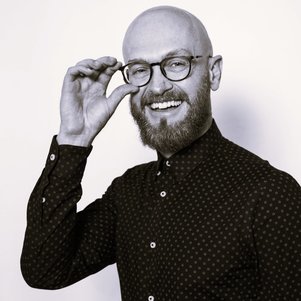The whole process from cutting and working the leather is done by hand. Stitching the different parts together is done using the classic saddle stitch. This is an old craft technique where you manually stitch leather parts together using two needles and special thread. It is an inspiring craft to learn: from making the holes with the special forks to finishing the edges with polish. This is a tool you use in combination with a cream for leather that gives the edges of your product a subtle finesse. You also use classic tools like a folding bone and a wetlat to sharpen your knife. Famous old fashion houses still make their leather bags in this old-fashioned way, even though the contemporary industrial leather sewing machine is many times faster.
In this course, you'll be challenged to create unique products using high-quality vegetable-tanned leather. We begin with a small project, such as a (credit) card holder, to learn the basics of saddle stitching and precision work. Then, you'll move on to a larger project, like a festival bag or tote bag. If time allows, you can also create smaller items like a phone pouch, glasses case, AirPod holder, or watch strap. Patterns are available and can also be made during open studio hours if you have an X subscription.
Once you've mastered the basics, you're welcome to design your own projects, as long as they’re not too complicated for beginners. You can choose to work on a larger item like a festival bag, a tote bag, or a laptop cover, or focus on smaller items. Throughout the course, you'll work with various tools and techniques, learning about craftsmanship and attention to detail. You'll also get an introduction to pattern making. Discover the art of leatherworking and create functional products with a unique, personal touch.
Schedule & enrolment
Teachers

Morten Clausen
Morten Clausen took the year-long training to become a skilled bag maker with Roos van Put and is now a teacher at cursustassenmaken.nl. He has a great passion for saddle stitch bag making and for the fine detailed work involved. His passion and knowledge includes both machine stitching and traditional saddle stitching. He has his own label called Official Morten Clausen Leather.
Rates
Category 1 - Student
Category 2 - TU Delft employee
Category 3 - Other
You do not need an X-subscription to follow this course. However, you do need an account in our webshop, which yo can create with your NetID. Don't have a NetID? Then drop by X to create an account.
Practical Information
The price of the course includes the leather credit card holder and the festival bag (with canvas strap).
Haberdashery and additional leather can be purchased during the course. The supplier has very reasonable prices (leather: 35 euros per m2/kg).
The Open Studio Leatherworking is accessible after completing a leatherworking course with an X-subscription, when an assistant is present. All you need to do beforehand is register. The assistant is there to help, advice and ensure that all materials and equipment are used responsibly and safely.
During the Open Studio Leatherworking, you are free to work with the techniques, tools, and materials you were instructed on during the course lessons. Additionally, materials such as leather scraps, thread, and other consumables are available for purchase.
